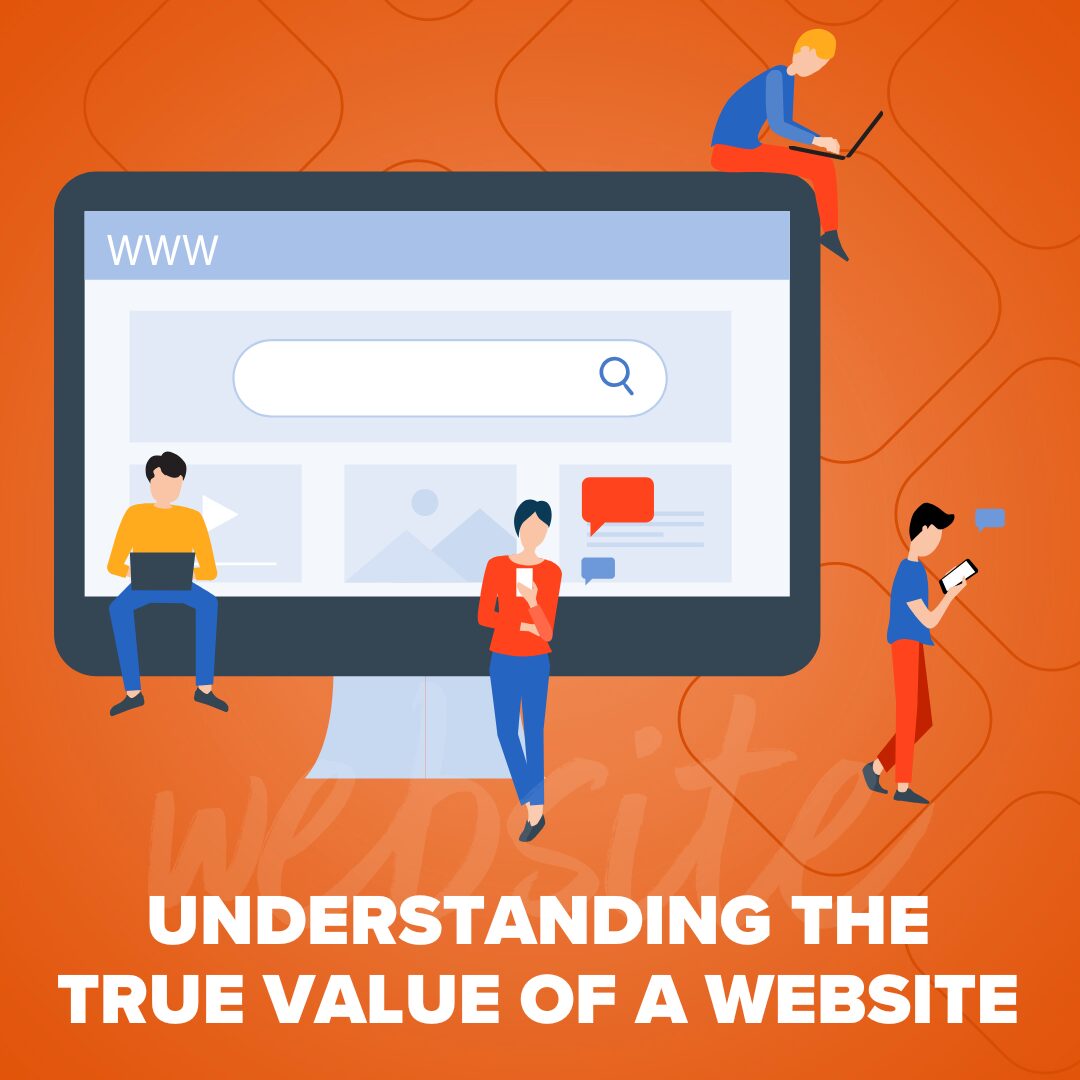
Understanding the True Value of a Website
Your website isn’t just a pretty online brochure. It’s an investment, a 24/7 salesperson, and the heartbeat of your online…
Read More
Today’s consumers demand more from marketing than a one size fits all mentality. That’s because most consumers are women, and here’s a news flash, they don’t like pink, they don’t like stereotypes, and if it doesn’t feel authentic, don’t even bother. The female perspective has greatly influenced a new wave of marketing success, and for good reason. So why is marketing to women so important?
 In a nutshell, it’s because women account for $31.8 trillion in global spending and control more than 83% of purchases made in the U.S. Who wouldn’t want to capitalize on those numbers?
In a nutshell, it’s because women account for $31.8 trillion in global spending and control more than 83% of purchases made in the U.S. Who wouldn’t want to capitalize on those numbers?
Not only are they buying items geared towards women, but they are also venturing more into the items once marketed mainly to men. In fact, women purchase over 50% of the ‘traditional’ male products. Women are flexing their buying power in areas such as home improvement, mechanics, and vehicles.
Women are responsible for 62% of all new cars sold, and influencing more than 85% of car purchases. Women are no longer waiting for a man to make these decisions. They are empowered to make them alone or as equal partners.
Women are the ultimate gatekeepers when it comes to household spending. On average, 89% of women are reported to be in control of the daily shopping needs. They determine what products and brands come into the household for themselves, their spouses, children, and pets.
Even a single woman has huge influential power over her friends and family because women are 92% more likely to recommend products to friends. Word of mouth is still one of the greatest marketing tools, and with social media, word of mouth travels ridiculously fast.
Not only are women in the driver’s seat when making the purchase decisions, but they are well informed when making these decisions. Women are more likely to research items before purchasing them, including checking out social media/influencer reviews.
When it comes to larger purchases, that time may double. Why is that? Women don’t want to do the work twice. They want to know they are getting a quality product that will do what it’s supposed to, and they can move on to the next thing. Women will be loyal to a product or brand as long as that brand is loyal to them. Change the marketing, change the formula, and you may have lost a customer.
Women are not just on the consumer side of business — but running the whole darn thing. Women own roughly 40% of businesses, and their influence can be seen in everything from their marketing strategies to how they do business as a whole. But it doesn’t stop there.
In the corporate world, 23% of women are in executive positions, 29% are in senior management, and 37% are in manager positions worldwide. Women are genuinely changing how products are bought, sold, and marketed, all for the better. Female run companies are outperforming, well, none female run companies.
Let’s tell it like it is. Women are doing better than men. This isn’t just opinion, but fact. Of all the S&P 500 companies out there, 468 have male CEOs, and 32 have female CEOs, yet the female run companies outperformed the male run companies by a difference of 123% in returns! That’s huge and something that can’t be ignored.
 As more companies increasingly recognize the power of female consumers, marketing to women has become an important part of brand strategy. However, there are a few key rules that brands must remember in order to create content that resonates with their target audience.
As more companies increasingly recognize the power of female consumers, marketing to women has become an important part of brand strategy. However, there are a few key rules that brands must remember in order to create content that resonates with their target audience.
Effective marketing to women requires an understanding of the diversity and complexity of their experiences. To reach female audiences, brands must avoid assumptions and take into account individual backgrounds, needs and wants.
The old mantra of marketing to women was to simply make it pink, slap on the fact that the item is ‘for her’, and mark it up even if the product is identical to what a man would buy, also known as the pink tax. Which one of these offensive marketing tacts do we discuss first?
As anyone knows, all women are not the same; therefore, assuming that all they need is some pretty pink packaging is a very archaic way of thinking. Labeling items such as a pink razor or pen ‘for her,’ well that’s just insulting. Which is all a vehicle leading to the pink tax. This is just a really sneaky way for companies to justify marking up prices on items marketed towards women.
A study by JPMorgan Chase found that women pay roughly an additional $1,300 annually due to this practice. It’s easy to see why many women have a strong disdain for big business, given their history of exploiting and manipulating female customers.
Stereotyping women in marketing campaigns is a destructive approach that alienates potential customers and gives a distorted view of what female consumers want and need. Only 29% of American women believe they are accurately represented in advertising.
Marketers should strive to create campaigns that portray women as equal and dynamic participants in the industry rather than objects to be sold to. Since not all women will respond to the same message the same way, it’s important to break down the branding message into smaller segments to reach potential customers. Developing content that includes diverse voices and perspectives, embraces new ideas, and presents an unbiased look at how women will interact with products will create long-term connections and brand loyalty.
Telling a woman’s story in marketing is essential for creating an emotional connection with potential customers. These stories showcase the diversity of experiences that women share and emphasize how every journey is individual and unique. By sharing these stories, brands are able to demonstrate their commitment to understanding the needs of female consumers and create content that speaks to them on a highly personal level.
Additionally, by bringing these stories together into one narrative, marketers can tap into a shared emotion that resonates with their audience and helps make a lasting impression.
Including diversity in marketing is essential for creating campaigns that are truly reflective of women and their experiences. By considering differences in age, race, ethnicity, size, and lifestyle, brands can ensure that their messaging resonates with all types of female consumers.
Additionally, embracing diversity allows marketers to create content that celebrates each person’s unique identity and avoids reinforcing stereotypes or singling out any one group.

Now with all that being said, since women are the prime shoppers, decision makers, and in some instances the top money makers in the family, what else are they capable of? The answer — a lot! Let’s explore some more ways women are proving to be an invaluable business resource especially when it comes to female marketing influence.
We’ve all heard the term women’s intuition. Well, it’s no joke. Intuition and creativity allow women to think outside the box, take risks, and develop innovative solutions that maximize success for their clients. This can also bring an understanding of what potential customers are looking for in terms of products or services.
Women often have deeper insights into social dynamics and relationships, as well as emotional reactions, than their male counterparts. This advantage can often lead to better business judgments than those made with strictly logical reasoning. Additionally, they may be able to identify missed opportunities within existing markets. For example, women may be more likely than men to spot a new trend in customer behavior or identify a neglected market segment ripe for investment.
Women are often more conservative in their approach, favoring long-term solutions over risky short-term decisions. They have an awareness of the greater consequences of their actions, viewing decisions in terms of how they will affect both present and future customers.
For example, women often favor investing in customer relationships rather than chasing after short-term gains. This can help increase customer loyalty over the long term, which we all know is a big deal, leading to improved profits, better market positioning, and a customer base that isn’t going anywhere.
Women are often particularly good at recognizing the small details that can make or break a strategy. They are inclined to think things through thoroughly and carefully, considering all aspects. By paying close attention to the finer details of a plan, and different points of view, women can help ensure that each step in the process is carefully thought out and executed with precision. This kind of detail-oriented decision-making is invaluable in today’s competitive digital landscape and will help foster long-term success.
 Women bring unique life experiences to the table that can be leveraged to gain insight into markets, thus providing opportunities to understand customer needs better and develop more effective product/service offerings.
Women bring unique life experiences to the table that can be leveraged to gain insight into markets, thus providing opportunities to understand customer needs better and develop more effective product/service offerings.
Moreover, these different life experiences can lend invaluable input into strategy formulation, enabling more informed decisions that may otherwise have been missed due to a lack of foresight or understanding. The power of such insight cannot be underestimated.
Women are changing the way marketing is handled both from a consumer perspective and a business perspective. They can see the whole picture, which leads to more diverse marketing tactics, proving that the unique view of the female perspective shouldn’t be ignored.
With more women taking leading roles in businesses and organizations across the globe, their insight into communication strategies, product development, and potential customer bases is truly invaluable.
Comments
There are currently no responses.